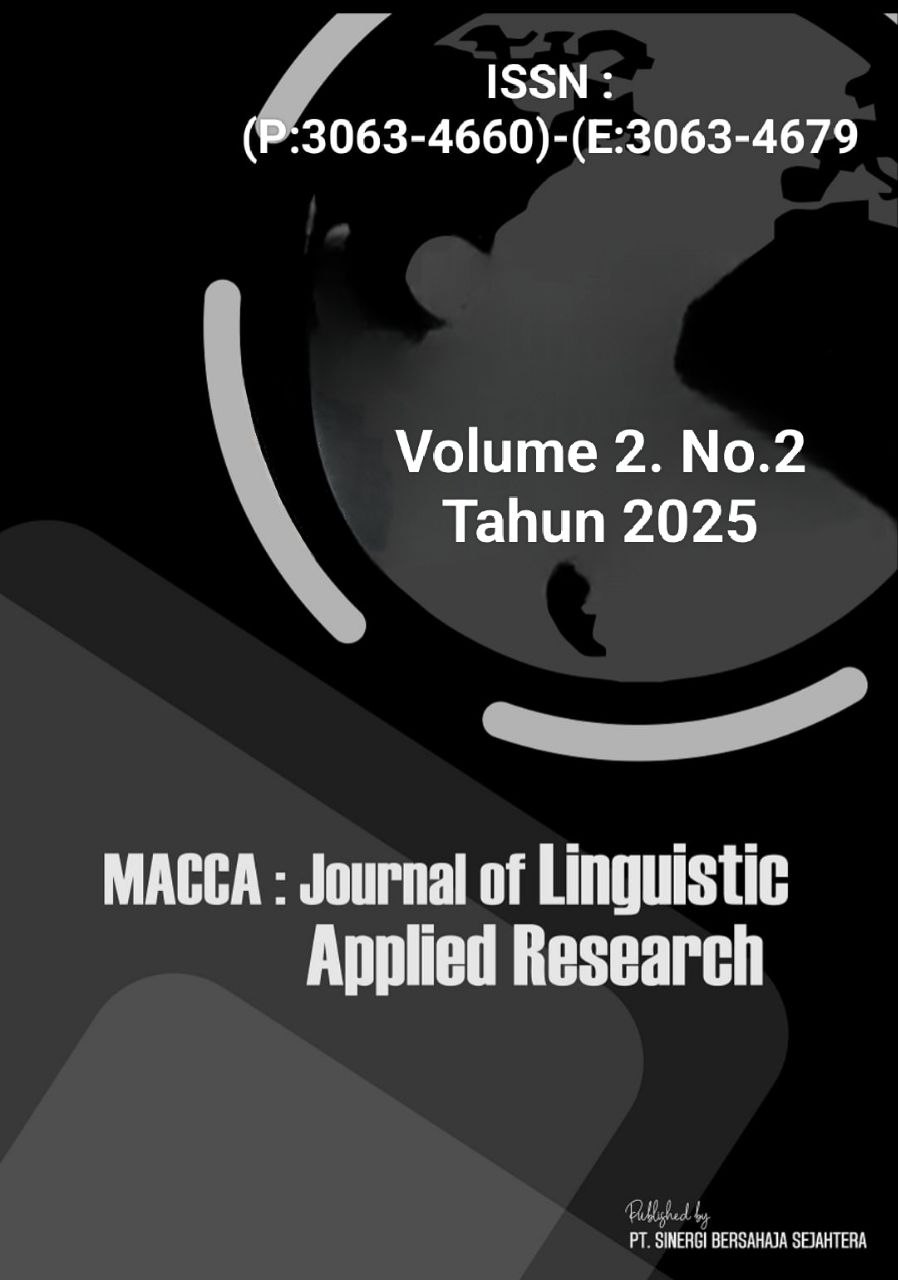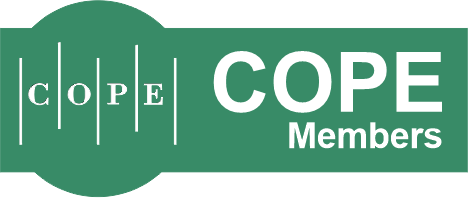The Use of English Slang In Learning English By Generation Z Student In Tiktok Social Media: Sociolinguistic Approach
Keywords:
English slang, Generation Z, TikTok, sociolinguisticsAbstract
This research aims to describe the use of English slang in learning English by Generation Z students through TikTok social media, and to analyze how such exposure influences their language skills, particularly in vocabulary acquisition and the contextual use of slang. The study also seeks to explore how students interpret and adapt slang as part of their language learning experiences in the digital era.The research applied a qualitative descriptive method with a sociolinguistic approach. Data were collected through in-depth interviews and direct observations involving 15 students from various study programs who actively use TikTok in their daily lives. The data were then processed through stages of reduction, display, and conclusion drawing, allowing the findings to capture the phenomenon comprehensively and in detail.The results reveal four main themes. First, Exposure to English shows that students encounter slang intensively through captions, comments, and interactions with content creators. Second, Impact on Learning indicates that slang enriches vocabulary and lexical knowledge, yet its use in formal contexts remains limited and may cause miscommunication. Third, Situation and Use of Slang highlights that slang is commonly used in casual peer conversations, functioning as an expression of social identity and group solidarity. Fourth, Understanding of Slang demonstrates that students acquire slang through curiosity, independent searches, and peer assistance. In conclusion, the use of English slang on TikTok serves as an authentic language input that enriches vocabulary and enhances informal communication among Generation Z students. However, contextual awareness is necessary to ensure its appropriate use, particularly in academic and formal settings.
References
Abdul Jalil Jum’uatullaila, Buhari, Syahrir L, & Sam Hermansyah. (2025). The Influences of Using Quizizz in Student’s English Learning Outcomes. INTERACTION: Jurnal Pendidikan Bahasa, 12(1), 1030–1040. https://doi.org/10.36232/interactionjournal.v12i1.3526
Beal, Joan. 2010. An Introduction to Regional Englishes: Dialect Variation in England. Edinburgh University Press.
Cameron, Deborah. 1995. Verbal Hygiene. The Politics of Language. London New York: Routledge.
Firamadhina, Fadhlizha Izzati Rinanda, and Hetty Krisnani. 2021. “PERILAKU GENERASI Z TERHADAP PENGGUNAAN MEDIA SOSIAL TIKTOK: TikTok Sebagai Media Edukasi dan Aktivisme.” Share?: Social Work Journal 10(2):199. doi:10.24198/share.v10i2.31443.
Gilmore, Alex. 2007a. “Authentic Materials and Authenticity in Foreign Language Learning.” Language Teaching 40(2):97–118. doi:10.1017/S0261444807004144.
Gilmore, Alex. 2007b. “Authentic Materials and Authenticity in Foreign Language Learning.” Language Teaching 40(2):97–118. doi:10.1017/S0261444807004144.
Godwin-Jones, Robert. n.d. “EMERGING TECHNOLOGIES FROM MEMORY PALACES TO SPACING ALGORITHMS: APPROACHES TO SECOND-LANGUAGE VOCABULARY LEARNING.”
Holmes, Janet. 2013. An Introduction to Sociolinguistics. 4. ed. Learning about Language. London: Routledge.
Holmes-Elliott, Sophie. 2017. “Sali A. Tagliamonte , Teen Talk: The Language of Adolescents. Cambridge: Cambridge University Press, 2016. Pp. 298. Pb. £18.99.” Language in Society 46(5):742–45. doi:10.1017/S0047404517000641.
Isnaniah, Siti. 2015. “KAJIAN SOSIOLINGUISTIK TERHADAP BAHASA DAKWAH AKTIVIS DAKWAH KAMPUS (ADK) SURAKARTA.” KARSA: Jurnal Sosial dan Budaya Keislaman 21(2):270. doi:10.19105/karsa.v21i2.521.
Khansa, Shazrin Daniyah, and Kinkin Yuliaty Subarsa Putri. 2022. “PENGARUH SOSIAL MEDIA TIKTOK TERHADAP GAYA HIDUP REMAJA.” EKSPRESI DAN PERSEPSI?: JURNAL ILMU KOMUNIKASI 5(1):133–41. doi:10.33822/jep.v5i1.3939.
Krakow University of Economics, and Anna Dolot. 2018. “The Characteristics of Generation Z.” E-Mentor (74):44–50. doi:10.15219/em74.1351.
Megawati, Sam Hermansyah, Syahrir L, & Sitti Aisa. (2025). Analyzing Of The Use ELSA Speak Application With A Video Tutorial Approach Among Generation Z Students. Macca: Journal of Linguistic Applied Research, 2(2). Retrieved from https://journal.adityarifqisam.org/index.php/macca/article/view/191
Miles, Matthew B., and A. Michael Huberman. 200 AD. Qualitative Data Analysis: An Expanded Sourcebook. 2. ed., [Nachdr.]. Thousand Oaks, Calif.: Sage.
Mohamed, S., Nirmala, D., Hermansyah, S., & Wahyuddin, N. R. (2025). A QUALITATIVE STUDY ON MACHINE–HUMAN CO-CREATION: A SECONDARY DATA ANALYSIS OF RESEARCH TRENDS. La Ogi : English Language Journal, 11(2), 124-132. https://doi.org/10.55678/loj.v11i2.2255
Ridge, Elaine. 2011. “Crystal, David. 2003. English as a Global Language. Second Edition. Cambridge University Press.” Per Linguam 20(1). doi:10.5785/20-1-80.
Sabbila, Amalia Nur, and Agus Salim Mansyur. n.d. “PENGGUNAAN BAHASA SLANG OLEH REMAJA PESONA RANCAEKEK INDAH.”
Sam Hermansyah, & Ahmad Rizal Majid. (2025). The Use of Probing-Prompting Technique to Improve Reading Comprehension of Eighth Grade Students. INTERACTION: Jurnal Pendidikan Bahasa, 12(1), 543–556. https://doi.org/10.36232/interactionjournal.v12i1.2660
Sharabati, Abdel-Aziz Ahmad, Shafig Al-Haddad, Mohammad Al-Khasawneh, Natalie Nababteh, Mai Mohammad, and Qais Abu Ghoush. 2022. “The Impact of TikTok User Satisfaction on Continuous Intention to Use the Application.” Journal of Open Innovation: Technology, Market, and Complexity 8(3):125. doi:10.3390/joitmc8030125.
Wardhaugh, Ronald. 2006. An Introduction to Sociolinguistics. 5th ed. Blackwell Textbooks in Linguistics. Malden, Mass., USA: Blackwell Pub.
Warschauer, Mark. n.d. “The Death of Cyberspace and the Rebirth of CALL.”
Downloads
Published
How to Cite
Issue
Section
License
Copyright (c) 2025 Herawati, Sam Hermansyah, Syahrir L, Andi Sadapotto

This work is licensed under a Creative Commons Attribution-ShareAlike 4.0 International License.



































